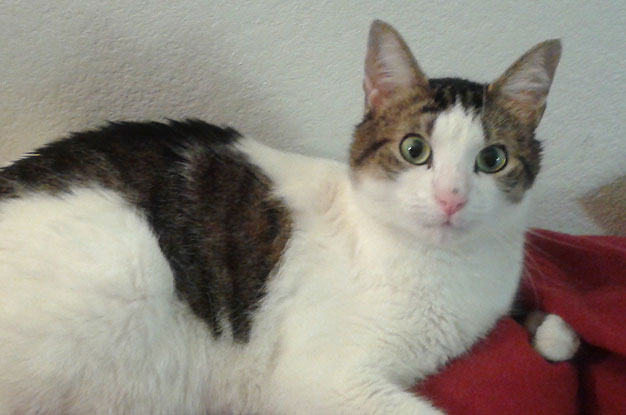
Many pet owners deal with behavioral problems in pets that were previously very well behaved. The most common complaints are a cat that suddenly started urinating/defecating outside of the litter box even though nothing has changed, dogs that were once very happy but suddenly started snapping while being pet. Most pet owners will begin looking for simple training solutions to resolve these behaviors, but they soon find that the behaviors are unchanged or, in some cases, have become worse!
As a pet owner I have had personal experience with this. I have a now 6 year old, male, domestic shorthair cat named Atreyu. He was always a very high energy and mischievous kitten. However, as he became an adult he started to show some concerning behaviors. His most common problem was unprovoked attacking. Many times he would lunge and attack anything that moved near him, including me. He also had a long list of other symptoms and behaviors including — but not limited to spontaneous attacking, constantly “twitching” skin, episodes of hyperactivity, bouts of depression/hiding, over grooming until red or bald, eating unusual items (ex. Plastic, cloth, toys and even the walls), and intermittent episodes of diarrhea and vomiting.
Once he reached about 5 months old I became very concerned for his health and my safety. By this time he had already been through four surgeries to remove foreign objects from his stomach and intestines. I had also been treated several times for a few large bite wounds requiring staples.
I began to seek out trainers to try and find a way to prevent further injury for both of us. Many trainers would not see him due to the extent of his aggression during his attacks, so they recommended me to a behaviorist at the University of Florida. I followed that lead only to be disappointed again because unfortunately Atreyu was evil as they come when he leaves his house. For a long time, I thought he could never be helped.
Finally, when he was 5 years old I found some answers for him. I had found a behaviorist, Kristen White, who was willing to work with him, but required a full medical work up so the veterinarians she works with could rule out any medical problems. So, we did a thorough doctor’s exam, bloodwork and collected an ultrasound guided urine sample for urinalysis.
The ultrasound reveled that he had “sludge like urine”, so we decided to do a urine culture, and the results showed he had a persistent urinary infection that was most likely a chronic condition. This was the first of many things to be discovered about him! The large spot that he over groomed on his lower abdomen, directly over his bladder. Once treatment was started for his UTI, he began to leave the area alone, eventually allowing the hair to grow back completely. All of his other tests did not show anything to be concerned about. The veterinarians diagnosed him with a condition called Hyperesthesia, which cause’s extreme sensitivity to touch, sounds and several other form of stimulation. It is a medical problem that presents most often as a behavioral problem, but is a medical condition as well.
Once explained, this made perfect sense given his history.
After his diagnosis, Atreyu finally began the road to recovery, taking daily medications to treat his condition. Within just a few weeks he transformed into a different cat! He began to seek attention and wanted to be petted constantly. He no longer attacked or over groomed and I soon noticed his skin was no longer twitching. Before long he even started purring all the time so loudly he made it difficult to watch TV when he was near.
Atreyu’s story is like many other pets who suffer from behavioral problems. After a long and difficult road with him over the first 5 years, I finally have a happy cat that loves everyone and is finally a pleasure to live with.

Contact Us
Regular check ups with a veterinarian are important for your pet's health. Contact us today to schedule your next appointment.





